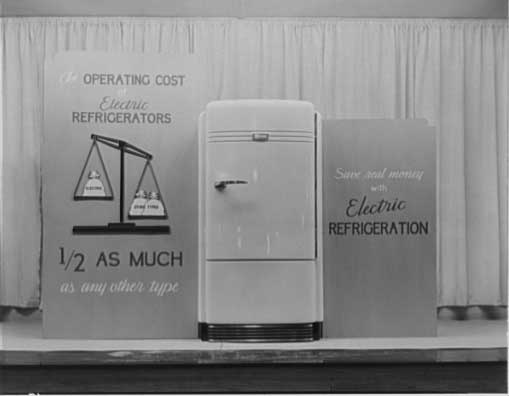1913 First Home Electric Refrigerator
,

The first home electric refrigerator was put on the market. It was called "The Domelre" and it was put on the market in Chicago for $900.
The introduction of the first home electric refrigerator marked a significant milestone in the history of domestic appliances. Named “The Domelre” (an abbreviation of Domestic Electric Refrigerator), this groundbreaking product debuted in 1913 in Chicago, Illinois. Priced at $900, which was a considerable sum at the time, the Domelre was targeted at affluent households. This refrigerator was a key innovation that set the stage for the modernization of food storage and preservation.
Before the advent of electric refrigeration, people relied primarily on iceboxes, which used large blocks of ice to keep food cool. These iceboxes required frequent replenishment of ice, which was delivered by local ice vendors. While effective to a degree, this method had limitations in terms of reliability, sanitation, and efficiency. The Domelre offered a revolutionary alternative by introducing electric cooling, eliminating the need for ice deliveries and providing consistent, low-temperature food storage.
The Domelre’s cooling mechanism was based on the principles of mechanical refrigeration. It used a compression system, in which refrigerant circulated through coils to absorb and remove heat from the refrigerator’s interior. This technology was a considerable improvement over ice-based systems, allowing users to maintain lower and more stable temperatures. The refrigerator was powered by electricity, a relatively novel utility in many homes during that period, particularly in urban areas like Chicago.
The Domelre was designed to fit on top of an existing icebox, effectively transforming it into an electric refrigerator. This design was a practical solution for households transitioning from traditional iceboxes to modern refrigeration technology. The unit was compact for its time, which made it adaptable for home kitchens, although its $900 price tag meant it was out of reach for the average consumer. To put this cost in perspective, $900 in 1913 is equivalent to over $25,000 in today’s money, highlighting that early refrigerators were luxury items.
While the Domelre itself was not a commercial success and is largely forgotten today, its impact on the development of home refrigeration was substantial. It paved the way for other manufacturers to refine and mass-produce electric refrigerators. Companies like Frigidaire (originally part of General Motors) and Kelvinator entered the market in the 1910s and 1920s, offering more advanced models at gradually decreasing prices. By the 1930s, home electric refrigerators had become more accessible to middle-class families, transforming food storage and enabling longer shelf lives for perishable goods.
The advent of electric refrigeration also had a profound impact on health and diet. It allowed households to store fresh produce, dairy, and meats safely for extended periods, reducing foodborne illnesses. Additionally, refrigeration enabled new culinary practices and increased reliance on frozen and chilled foods, which became staples in modern diets.
In summary, the introduction of the Domelre in 1913 represented the first step toward the widespread adoption of electric refrigeration in homes. Despite its high cost and limited commercial success, the Domelre laid the foundation for the development of one of the most essential appliances in contemporary households. Its legacy lives on in the convenience and safety that modern refrigerators provide to millions of homes worldwide.
 >
>